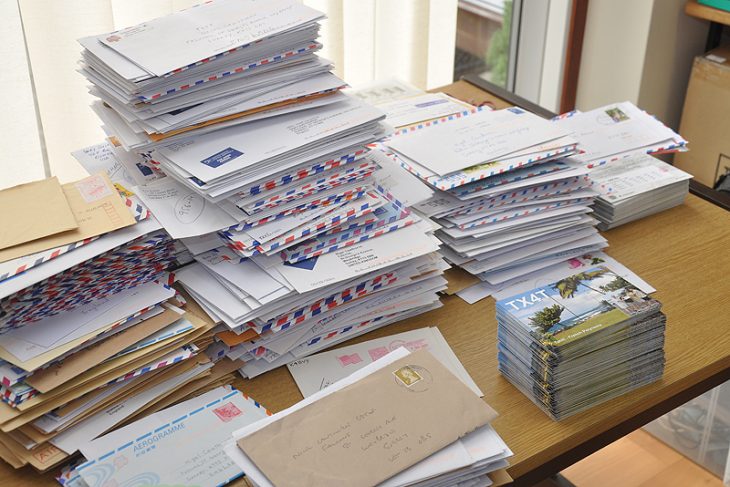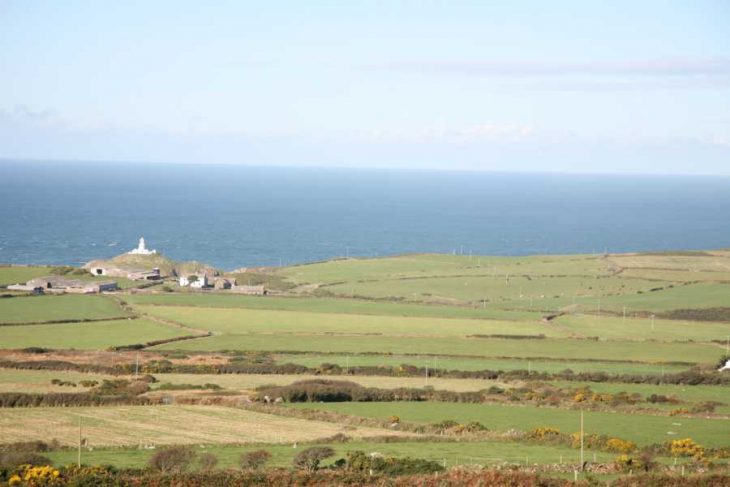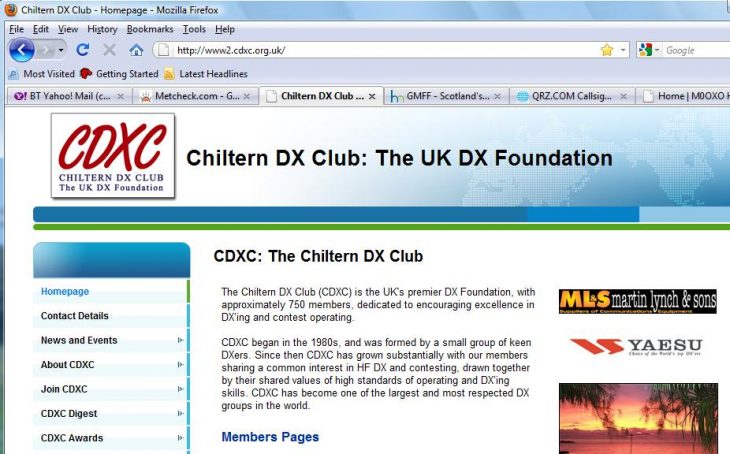I am the Manager for;
2D0RLA EU-116, 2E0AV, 2E0DJB, 2E0KYI, 2E1AYS, 2O0IJK, 2Q0IJK, 2R0KYI, 2SZ, 2V0IJK, 3A/EI9FBB, 3A/G0VJG, 3B7C AF-015, 3B8HA AF-049, 3B8M, 3B8MU AF-049, 3B9C AF-017, 3B9FR AF-017, 3B9HA AF-017, 3B9WR AF-017, 3C7A AF-010, 3D2AS OC-016, 3D2T2, 3V8CQ, 4E8T OC-174 TAWI TAWI, 4K5ZI EU-182, 4S7DLG, 4W3A OC-148, 5B/G3SZU, 5B/G7VJR, 5B/LA7THA, 5B/M5RIC, 5B/MM0GOR AS-004, 5B/RA3CQ, 5V7EI, 6O6O, 6O7O, 6W/MM0NDX, 7P8LB, 7Q7EI, 8Q7CQ AS-013, 9G2DX, 9G5X, 9H3RJ EU-023, 9H4G EU-023, 9H5G EU-023, 9H5G/C6A NA-001 BLACK CAY, 9H5G/C6A NA-001 GT EXUMA, 9H5G/C6A NA-001 LEE STOCKING, 9H5G/C6A NA-054 LT HARBOUR CAY, 9H5G/C6A NA-113 ACKLINS, 9N1DX, 9N1MM, 9N7EI, 9X2AW, A25UK, A35JT, A52JF, A70X 2017, A70X 2018, A70X AS-088, A71A, A71AM, A71EM, A71RCAR, A71LL, A71SS, A71VV, A71YY, A73A, A75GR, A91HI AS-202, A95GR AS-002, AT2SH, AX16AC OC-001, AX5GR, AX5PAS, AX5PAS OC-001, AX5PAS VKFF-0886 AX5PAS VKFF-1691, AX5PAS VKFF-1752, AX5PAS VKFF-1764, AX5PAS VKFF-2247, AX5PAS VKFF-2886, AX5WOW, AX8AA OC-001, BG5UDN AS-138, BY5YAA AS-138, C4I AS-004, C5X, C6APY NA-054, C6ATS, C6ATS NA-001 CRAB CAY, C6ATS NA-001 GT EXUMA, C6ATS NA-001 HOG CAY, C6ATS NA-001 LEE STOCKING, C6ATS NA-001 ROLLE CAY, C6ATS NA-048 SOUTH BIMINI, C6ATS NA-054, HOFFMANS, C6ATS NA-054 LT HARBOUR CAY C6ATS NA-113 ACKLINS, C6ATS NA-113 FISH CAY, C6ATS NA-113 JAMAICA, C6ATS NA-219 ANGUILLA, CM2ESP NA-005, CM5FZ NA-005, CN2AM, CN8QY
CN8QY BOTA, CO4XT NA-056, CR5V, CT7ANG (SK), CT8/G7VJR EU-089
CU2/G7VJR EU-003, D44TWO AF-005, D67GIA AF-007, DL9HAL, DU1-VK3FY OC-128, DU1/VK3FY OC-128, DU1OXL OC-042, DU1OXL OC-129, DU1UD OC-042, DU1UD/8 OC-105 MAPUN, DU1UD/8 OC-119 JOLO SULU, DU1UD/P OC-126 LUBANG, DU8FY OC-130 MINDANAO, DV1DIN OC-042, DV1UD OC-042, DV1UD-P OC-093 BATAN, DW1OXL OC-042, DW1OXL OC-129
DW1OXL-7 OC-129, DW3DIN OC-042, DW3XHZ OC-042, DX0DX OC-042
DX1DX OC-042, DX8DX OC-042, DX8DX OC-174 BONGAO, DX8DX OC-188 PANGUTARAN, DX8DX OC-202, DX8DX OC-225 TAGANAK, DX8DX OC-235
DX8DX/P OC-130 MINDANAO, DX8ZWC OC-235 BAYANGAN, DY1OXL OC-042, E6AG OC-040, EA5/GM0OBX, EA6-G3SZU EU-004, EA6-GQ3SZU EU-004,EA6/G3SZU EU-004, EG1CWO, EG2CWO, EI/G7VJR EU-115, EI/M5RIC EU-115, EI0DXG EU-115, EI4KI EU-115, EI5GM EU-115, EI9FBB, EJ0DXG EU-006 INIS MOR, EJ0DXG EU-007 GT BLASKET, EJ0DXG EU-103 LT SALTEE, EJ0DXG EU-121 BERE, EJ1D EU-006 INIS MOR, EJ3HB EU-121 BERE, EJ5GM EU-103 SALTEE, EJ5GM EU-121 BERE, EJ9FBB, EJ9FBB EU-103, EJ9FBB EU-121, EL2BB, EL2GM, EP2HAM, F5IHZ, FG/G4SGX, FG/G4SGX/P, FH/DL9HAL, FJ/EI5GM NA-146 ST BART, FJ/EI9FBB, FJ/MM0NDX NA-146, FK1TS, FP/G7VJR NA-032, FR/DL9HAL, FS/EI5GM NA-199 TINTAMERE, FS/EI9FBB, FS/MM0NDX NA-105, FW/G0VJG OC-054, FW5JG OC-054, G0CKV, G0RUZ, G0VJG/HI3 NA-122, G100C, G3DR, G3LZQ (SK), G3N, G3S, G3SZU, G3SZU/M, G3WRS, G3XVR/P, G3YQA, G4RCG, G4SGX, G5XV, G5XV EU-120, G5XV/P, G6XX, G7N EU-120, G7VJR, G8FSO, GA8VL, GB0ANT, GB0CBE, GB0HI EU-120, GB0PSK, GB0VUL, GB0WFF GFF-014, GB0WFF GFF-015, GB0WFF GFF-091, GB0WSD, GB1418WAR, GB1HI EU-120, GB1PC, GB1TAN, GB1WH, GB1YDD, GB2HI EU120, GB2MDC, GB2NSF, GB2NZ EU-005, GB2WHL, GB300FM, GB4CBE, GB4CI EU-124, GB4ESH, GB4GCT, GB4IPY, GB5HI EU-120, GB5NCQ, GB60ATG, GB60HRH, GB6WRS, GB75UW, GB8LMI EU-099, GD0A EU-116, GD100C, GD100C EU-116, GD4SKA EU-116, GD6XX EU-116, GD7VJR EU-116, GI3DR EU-115, GI4OPH EU-115, GI6XX EU-115, GJ100C, GJ3DR EU-013, GJ6XX EU-013, GJ7VJR EU-013, GM0OBX, GM100C, GM3DR, GM6DX, GM6XX, GM7VJR, GO2HQ, GO4RCG, GO7VJR, GQ4RCG, GQ7VJR, GR2HQ, GR3SZU, GR4RCG, GR7VJR, GS8VL, GS8VL EU-008 COLL, GS8VL EU-009 ORKNEY, GS8VL EU-010 LEWIS, GU0VJG, GU3DR EU-114, GU6XX EU-114, GU7VJR EU-114, GW100C, GW3DR, GW4OH, GW5X EU-124, GW6XX, GW7VJR, GW8ASA, GX1WRS, GX3WRS, GX5XV, H20A, H20A AS-004, H22A AS-004, H2A AS-004, H42NT OC-127, H44NT OC-047, HB0/GM4UYE, HI9/G4RCG NA-096, II0GMC, II0XMAS, IL7MP EU-050 SAN DOMINO, IL7MP EU-050 SAN NICOLA, IR0AAW, IZ0UIL, IZ0UIM, J3/G0VJG NA-024, J6/G0VJG, J79TA NA-101, J79U NA-101, J79WR NA-101, JA0RQV/6Y5 NA-097, JI1SEU, JW/EA3NT, JW/G7VJR EU-026, JX/G7VJR EU-022, JX/SQ4MP EU-022, JY9ET, K3BV, KH6/G3SZU OC-019, KH6ZU OC-019, KK4OYJ, KP2/G4RCG NA-106, KP2/KI7VR NA-106, KP2ZZ NA-106, KP4/EI9FBB NA-249, LU5DWK, LW6DFR, LX/GM0OBX, M0AID, M0BJL, M0BZH, M0C, M0GGR, M0IAA, M0JQK, M0KYI, M0LDI, M0OXO, M0OXO/P GFF-111, M0OXO/P GFF-193, M0OXO/P GFF-216, M0SCC/P, M0TNG, M0UKI/P EU-109, M0UOO, M0YTT, M0Z, M2G, M2L, M2X, M2Z, M3WSQ, M3ZLZ, M3ZYZ, M4S, M4X, M5E, M5RIC, M7C, MD/IZ0UIL EU-116, MD0RLA EU-116, MD1E, MD1U, MD5RIC/P EU-116, MD7C EU-116, MI0ILEM, MI6GTY, MI7C EU-115, MJ/EI9FBB, MJ0JZE EU-013, MJ0UOO EU-013, MJ0X EU-099, MJ2Z EU-013, MJ5RIC EU-013, MM0NDX/P EU-009, MM0RLJ, MM5RIC, MM7C, MO0KYI, MO0OXO, MQ0IAA, MQ0KYI, MQ0OXO, MQ5RIC, MQ6EOW, MR0IAA, MR0OXO, MS0IXD, MS0UKI EU-108, MT0IXD EU-116, MU0JZE EU-114, MU2Z EU-114, MU5RIC EU-114, MU7C EU-114, MW0JZE, MW0OXO/P GFF-015, MW0OXO/P GWFF-032, MW0OXO/P GWFF-042, MW0OXO/P, GWFF-066, MW0RLJ, MW0X, MW2Z/ MW5EPA, MW5RIC, NL0H, NL0H/P NA-040, NL0H NA-040, NP4DX, OH0UDG, OM6AA, OY/G7VJR EU-018, P40FN SA-036, P40FY SA-036, PA5Y, PJ4/MW0JZE SA-006, PJ7/EI5GM NA-105 ST. MAARTEN, PJ7/EI9FBB, PJ7/MM0NDX NA-105, PP2RR, PS1S SA-077, PW2D, PW5D, PX2C(SK), PY2MTV(SK), PY5/VK3FY, RA/M0OXO, RA/VK3FY, RA3CQ
RA3WDK, RD4A, S5/M0BJL, S79C AF-119, S79VJG AF-024, SM5CKV EU-177
SV5/G4RCG, SV5/MW0JZE EU-001, SV8/IW7EGQ, SV9-G0VJG, SW5CC EU-001
SW8CC EU-052, T30T OC-017, T32C OC-024, TA/G0VJG, TC7V, TF/EI9FBB EU-021, TF/EI9FBB EU-071, TF/EI9FBB EU-168, TF/G7VJR EU-021, TF/MM0NDX EU-021, TF/MM0NDX EU-071, TF/MM0NDX EU-168, TL8AO, TM1CEZ EU-157, TN5E, TO4C NA-107, TT8KO, UL7MAX, UL7MO, UN3M, UN7G, UN7MO, UO2M, UP7G, UT/M0UOO, V25G NA-100, V25V NA-100, V26VR NA-100, V31GX, V31GX NA-073 AMBERGRIS CAYE, V31MA, V31PS, V31ZM, V3A, V55A, V73MT OC-029, VE3KTB/VY0 NA-008, VE3KTB/VY0 NA-043, VI17AC, VI50DC, VI5WOW, VI70HI, VI70MI, VK0HI AN-003, VK16AC OC-001, VK2/G7VJR, VK2012TDF, VK2013TDF, VK2014TDF, VK2015TDF, VK2CZ, VK3FGRC, VK3FN, VK3FNIK, VK3FT, VK3FT/1 OC-136, VK3FY, VK3FY/DU1 OC-042, VK3FY/DU8 OC-130, VK3FY/DU8 OC-235, VK3FY/P OC-136 PHILLIP, VK3HF, VK3JEF, VK3QRO, VK4/EA3NT OC-137, VK4HAM OC-142, VK4NM, VK4NM/P OC-142, VK5GR, VK5IR, VK5PAS, VK5PAS LAUCKE MILL, VK5PAS NIXON MILL, VK5PAS SOTA SE001, VK5PAS SOTA SE004, VK5PAS SOTA SE013, VK5PAS VK3VC-018, VK5PAS VK3VC-019, VK5PAS VK3VT-057, VK5PAS VKFF -0866, VK5PAS VKFF- 0372, VK5PAS VKFF- 0899, VK5PAS VKFF-0115, VK5PAS VKFF-0402,, VK5PAS VKFF-0539, VK5PAS VKFF-0749, VK5PAS VKFF-0757, VK5PAS VKFF-0760, VK5PAS VKFF-0766, VK5PAS VKFF-0777, VK5PAS VKFF-0778, VK5PAS VKFF-0779, VK5PAS VKFF-0780, VK5PAS VKFF-0781, VK5PAS VKFF-0782, VK5PAS VKFF-0784, VK5PAS VKFF-0785, VK5PAS VKFF-0787, VK5PAS VKFF-0788, VK5PAS VKFF-0789, VK5PAS VKFF-0790, VK5PAS VKFF-0791, VK5PAS VKFF-0793, VK5PAS VKFF-0795, VK5PAS VKFF-0797,, VK5PAS VKFF-0799, VK5PAS VKFF-0800VK5PAS VKFF-0805, VK5PAS VKFF-0823, VK5PAS VKFF-0828, VK5PAS VKFF-0831, VK5PAS VKFF-0866, VK5PAS VKFF-0867, VK5PAS VKFF-0868, VK5PAS VKFF-0869, VK5PAS VKFF-0870, VK5PAS VKFF-0873, VK5PAS VKFF-0875, VK5PAS VKFF-0877, VK5PAS VKFF-0878, VK5PAS VKFF-0880, VK5PAS VKFF-0881, VK5PAS VKFF-0883, VK5PAS VKFF-0884, VK5PAS VKFF-0889, VK5PAS VKFF-0892, VK5PAS VKFF-0894, VK5PAS VKFF-0897, VK5PAS VKFF-0904, VK5PAS VKFF-0905, VK5PAS VKFF-0907, VK5PAS VKFF-0910, VK5PAS VKFF-0911, VK5PAS VKFF-0912, VK5PAS VKFF-0913, VK5PAS VKFF-0918, VK5PAS VKFF-0921, VK5PAS VKFF-0924, VK5PAS VKFF-0927, VK5PAS VKFF-0930, VK5PAS VKFF-0933, VK5PAS VKFF-0937, VK5PAS VKFF-0938, VK5PAS VKFF-0940, VK5PAS VKFF-0941, VK5PAS VKFF-0958, VK5PAS VKFF-0964, VK5PAS VKFF-0994, VK5PAS VKFF-0999, VK5PAS VKFF-1024, VK5PAS VKFF-1029, VK5PAS VKFF-1030, VK5PAS VKFF-1038, VK5PAS VKFF-1045
VK5PAS VKFF-1047, VK5PAS VKFF-1052, VK5PAS VKFF-1055, VK5PAS VKFF-1056, VK5PAS VKFF-1061, VK5PAS VKFF-1064, VK5PAS VKFF-1078
VK5PAS VKFF-1086, VK5PAS VKFF-1092, VK5PAS VKFF-1124, VK5PAS VKFF-1131, VK5PAS VKFF-1159, VK5PAS VKFF-1683, VK5PAS VKFF-1684, VK5PAS VKFF-1685, VK5PAS VKFF-1686, VK5PAS VKFF-1688, VK5PAS VKFF-1690, VK5PAS VKFF-1699, VK5PAS VKFF-1701, VK5PAS VKFF-1705
VK5PAS VKFF-1707, VK5PAS VKFF-1712, VK5PAS VKFF-1723, VK5PAS VKFF-1724, VK5PAS VKFF-1725, VK5PAS VKFF-1729, VK5PAS VKFF-1738
VK5PAS VKFF-1739, VK5PAS VKFF-1741, VK5PAS VKFF-1750, VK5PAS VKFF-1754, VK5PAS VKFF-1763, VK5PAS VKFF-1764, VK5PAS VKFF-1767
VK5PAS VKFF-1880, VK5PAS VKFF-2161, VK5PAS VKFF-2246, VK5PAS VKSSE-013, VK5PAS-VKFF-2247, VK5PAS/P, VK5WOW, VK6UKR
VK7FG OC-195, VK8/G0VJG, VK8AA, VK9CI OC-003, VK9L/G7VJR OC-004, VK9MR OC-072, VK9N/G7VJR OC-005, VK9NI OC-005, VK9PAS OC-005, VK9WG OC-007, VK9XI, VP2MAD NA-103, VP5/G4RCG NA-002, VP5/KI7VR NA-002, VP5/VK4BRC NA-002, VP8DMN SA-002, VP9/G7VJR NA-005, VY0ERC NA-008, VY0ERC NA-008 EQ69, VY0ERC NA-008 EQ79, VY0ERC NA-008 ER60
W6CKV, WP3C, XT2AGI, XT2AW, XV9DF, YB0EEX(SK),YB9/W3YM OC-022,
YC9MLL OC-151 FLORES, YJ0AG OC-035, Z2LA, Z6/EI5GM, Z6/EI9FBB, ZD8M AF-003, ZD8UW AF-003, ZF2CI NA-016, ZF2MN NA-016, ZF8/ZF2CI NA-016, ZF9/ZF2CI NA-016, ZL/G4SGX, ZL/M0IDA OC-134, ZL3NZ OC-134, ZL4AA OC-134, ZL7DX OC-038, ZL7M OC-038, ZL7STU, ZM90DX, ZR0SS, ZS1DX, ZS1SBW, ZS3/G3LZQ, ZS9V AF-064








